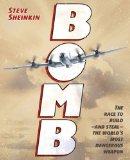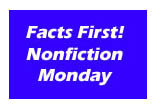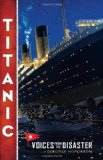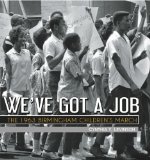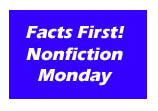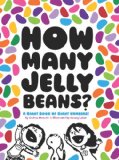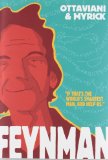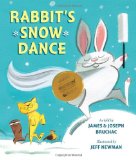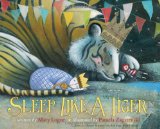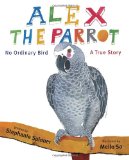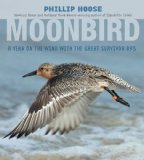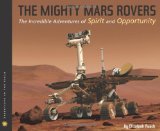Review of Bomb, by Steve Sheinkin
The Race to Build — and Steal — the World’s Most Dangerous Weapon
by Steve Sheinkin
Roaring Brook Press, New York, 2012. 266 pages.
Starred Review
2013 Newbery Honor Book
2013 Sibert Award Winner
2013 YALSA Excellence in Nonfiction Award Winner
Okay, this is a book that deserves all the acclaim. It’s exciting. It’s important. It’s well-researched. And it’s true. What’s not to like?
Steve Sheinkin takes three threads of history: The Americans’ race to build a bomb in time to make a difference in World War II, the efforts to stop the Germans from developing a bomb first, and the Soviet effort to steal the technology, with repercussions in the arms race that followed. He weaves all those threads together in a gripping page-turner that captures the tension of the time, even though you know how it all turned out.
I was surprised by how much I didn’t know. For example, I’d had no idea a team of Norwegians sabotaged a German heavy water factory and ultimately hampered Germany’s chances of beating the Allies to a bomb. I also wasn’t clear on the different types of atomic bombs and the obstacles in producing them. He made it all seem so simple!
And a whole lot of the book is about the spying and espionage surrounding the bomb. Talk about drama! Steve Sheinkin makes you feel the tension and intrigue, even while sticking to what’s known.
The one thing that bugged me? I fully realize this is incredibly minor, but I also strongly hope that it will be fixed in subsequent printings (and I’m sure this book will have many, many printings). Not once, but twice, someone was quoted talking about their “principle concern.” Eventually, people did have concerns about the principles involved, but in that context they were talking about their “principal concerns.” It bugs me to have an error like that in what seems to be an impeccably researched book. We discussed on Heavy Medal, do we hold Nonfiction books to higher standards? Well, I can assure you that would have bugged me in any book, but, yes, probably a little more in Nonfiction. But I can also inform you that I was too absorbed in the story to jot down the page numbers.
Despite those two annoying spots for nitpickers like me, this is a groundbreaking history book that I recommend for adults, teens, and children alike. You’ll learn something, and you’ll be on the edge of your seat learning it.
Find this review on Sonderbooks at: www.sonderbooks.com/Childrens_Nonfiction/bomb.html
Disclosure: I am an Amazon Affiliate, and will earn a small percentage if you order a book on Amazon after clicking through from my site.
Source: This review is based on a library book from the Fairfax County Public Library.
Disclaimer: I am a professional librarian, but I write the posts for my website and blogs entirely on my own time. The views expressed are solely my own, and in no way represent the official views of my employer or of any committee or group of which I am part.
This review is posted today in honor of Nonfiction Monday. This week’s Round-Up is hosted at Apples with Many Seeds.
